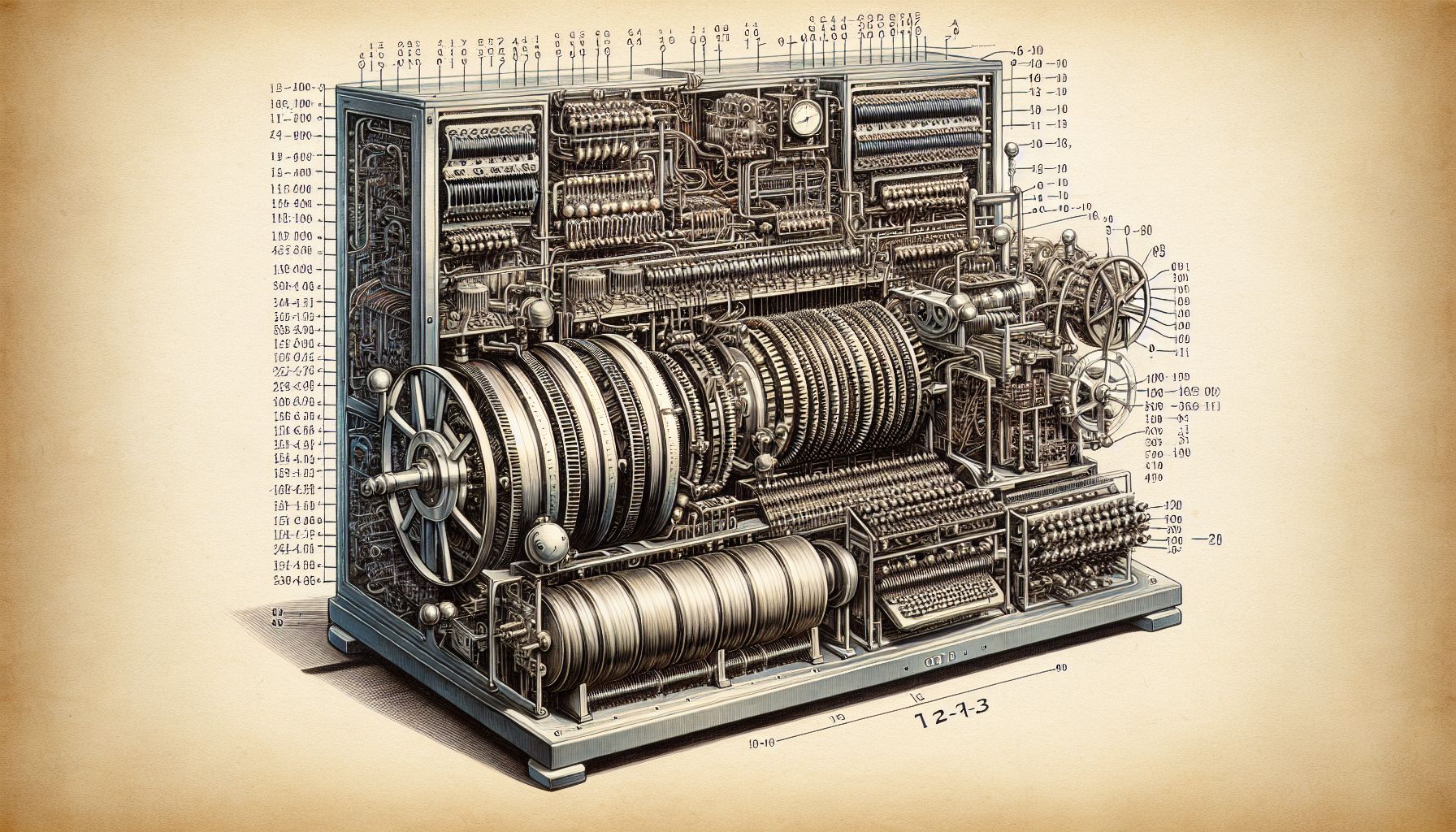📌 Let’s explore the topic in depth and see what insights we can uncover.
⚡ “Long before your sleek Macbook or powerful gaming PC, there was a computer powered entirely by telephone relays and punched film. Welcome to 1941, where Konrad Zuse’s Z3 was quietly sparking the dawn of the digital age.”
Greetings, tech aficionados! As we marvel at the robustness and sophistication of today’s digital technology, it’s always a good idea to take a step back and appreciate the trailblazing innovations that paved the way. Today, let’s time-travel back to 1941, to the birth of the first programmable electromechanical computer, Konrad Zuse’s Z3. In the midst of World War II, tucked away in Konrad Zuse’s Berlin apartment, the Z3 came to life, marking a significant milestone in the history of computer science. This marvel of engineering was the world’s first fully functional programmable computer. The concept of coding and programming, ubiquitous in the 21st century, found its roots in this groundbreaking machine. So, buckle up for a fascinating journey into the past as we decrypt the mystery of the Z3! 🛸
🏗️ The Blueprint of Z3: Understanding Its Construction 📐

"Konrad Zuse's Z3: The Dawn of Programmable Computing"
The Z3 was an electromechanical computer, which meant it used a combination of electrical components and moving mechanical parts to perform computations. Now, imagine a massive machine, about the size of a wall, composed of over 2000 relays. These relays, serving as switching devices, were the primary components of the Z3. The computer utilized a binary floating-point number system, a concept quite ahead of its time. It boasted a 22-bit word length and had a memory capacity of 64 words. While these numbers might seem minuscule by modern standards (considering our smartphones now have gigabytes of memory), they were revolutionary back in the 1940s. The Z3 was designed to perform a variety of operations, including addition, subtraction, multiplication, division, and even square root calculations. It could execute these operations at a speed of 3-5 seconds per operation, an impressive feat for its time.
🎛️ The Mechanics of Z3: Delving into its Operation 🎚️
Operating the Z3 was no small feat. It all began with a punched film, a strip of celluloid (similar to a filmstrip) with holes punched in it. The patterns of these holes represented the instructions or the program for the machine. This was the earliest form of programming, where each hole or no-hole combination corresponded to a specific command or data. The punched film was read by an optical reader, which then transformed the instructions into electrical signals. These signals would trigger the relays, causing them to either open or close, forming the basis for the binary system (0s and 1s). The Z3, however, was not a stored-program computer. This means the program and data were not stored in the computer’s memory simultaneously. Instead, they were fed into the machine separately.
💡 The Brain behind the Machine: Konrad Zuse 🧠
Konrad Zuse, a civil engineer by training, was the mastermind behind the Z3. His journey towards the Z3 began with the Z1, a binary mechanical calculator built in his parents’ living room. The Z1, however, was not reliable due to the limitations of mechanical parts. Zuse then developed the Z2 and Z3, replacing mechanical parts with telephone relays for improved reliability. Zuse’s vision was to create a machine that could automate tedious calculations, a task he often found himself stuck with during his engineering work. Little did he know that his invention would serve as the foundation for modern computing. Fun fact: Zuse is also credited with developing the first high-level programming language, Plankalkül, although it was not implemented in his lifetime.
🚀 The Legacy of Z3: Impact and Influence on Modern Computing 💾
The Z3, as the first programmable computer, has left an indelible mark on computing history. Its use of binary and floating-point arithmetic laid the groundwork for future digital computers. Another major contribution of the Z3 was the concept of programming. The idea of instructing a machine to perform specific tasks through a set of coded instructions has evolved dramatically over the years. It has given rise to the countless programming languages and software applications we have today. Unfortunately, the original Z3 was destroyed during World War II. However, a working replica, built by Zuse in the 1960s, is on display at the Deutsches Museum in Munich, showcasing its mechanical and historical grandeur to the world.
🧭 Conclusion: Honoring the Past, Inspiring the Future 🌠
The Z3, though a relic of the past, continues to inspire and educate. Its creation marked the dawn of a new era, an era where machines could be programmed to solve complex problems. The genius of Konrad Zuse reminds us of the power of innovation and the limitless potential of human intellect. As we navigate through the ever-evolving landscape of technology, let’s not forget to pay homage to the pioneers like Zuse, whose relentless curiosity and groundbreaking inventions have shaped the world as we know it. After all, understanding our past is a crucial step towards creating a better, more innovative future. So, the next time you’re coding a new app, playing a video game, or simply scrolling through social media on your smartphone, remember to tip your hat to Konrad Zuse and his Z3 - the grand ancestor of the digital world we so effortlessly navigate today! 🎩💻🌐
🌐 Thanks for reading — more tech trends coming soon!
